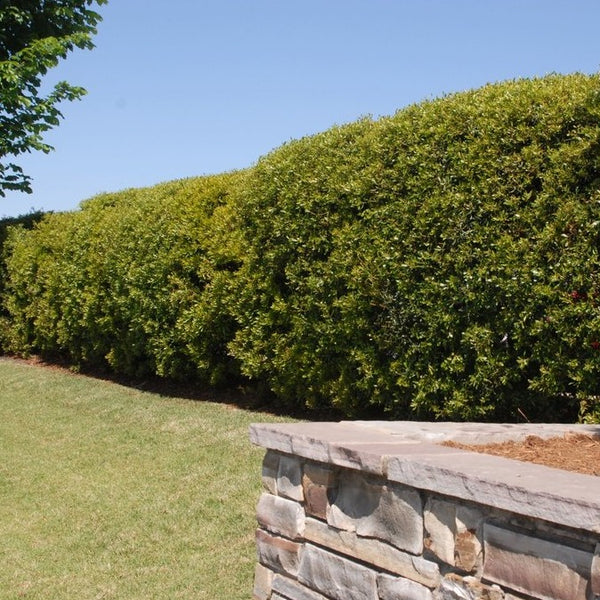

Spring planting season is on the way survey the landscape to see where you could add one or two. With a trend toward sustainable landscapes and native plants that support wildlife you can't beat the southern wax myrtle. With this rich history you will also find common names like bayberry, southern bayberry and candleberry associated with the shrub. They also used the leaves in cooking as a bay leaf substitute. Though I love the berries for the birds, the waxy fruit was once boiled and used by our ancestors to make bayberry candles. So if bird feeding is your goal make sure you have a female.

In other words, there are male and female plants. The southern wax myrtle is almost always unisexual or dioecious. The foliage is evergreen, and the white to grey multiple trunk structure is a landscape asset. It can grow over 30 feet tall, but I most commonly see them in the 15 to 20 feet range. Coastal residents are always looking for plants tolerant of salt spray, and wax myrtles are among the best. In the landscape you could not ask for a better small tree to act as a privacy screen around a porch, patio, deck, or garden bath or to soften harsh walls. This draws any predator's attention away from the real head and allowing the butterfly to escape. The tails give the appearance of a set of moving antennae with an eye. Hairstreaks, like the red-banded, slowly move their hind wings up and down while feeding and even at rest. I challenge you to watch your garden this year and identify some of the native hairstreak butterflies.

In other words, swallowtails and monarchs get all of the glory. This is one of the most beautiful butterflies in the garden, but as I quiz gardeners in my seminars most admit to having never seen a hairstreak.
#WAX MYRTLE ZONE FULL#
Some of these shrubs have attractive foliage and can grow quite tall Of course, some of these shrubs prefer full sun, while others tolerate partial or full shade. The wax myrtle is the host plant for the red-banded hairstreak butterfly. Evergreen shrubs for Zone 7 include: Agarita, Dittany of Crete, Lemon Cypress, Lantana, Mexican Orange, Salal, Southern Wax Myrtle, Spanish Bayonet, Texas Sage, and Yaupon Holly. Often overlooked is their role in the world of butterflies. This gives it a cold hardiness rating of zones 7-10. Though it is called the southern wax myrtle it is indeed native from Texas up the Eastern Seaboard to New Jersey. That's right, the name has been changed if for no other reason than to keep you on your toes. The southern wax myrtle is known botanically as Morella cerifera. At one time they were known as myrtle warblers and I can definitely see why. Sometime before spring you'll notice the yellow-rumped warblers having a feast. In the wildlife world the small blue berries feed about 40 species of birds. As a privacy screen for the landscape give it another 10 as it is just simply unbeatable. On a scale of native plants for the backyard wildlife habitat it scores a perfect 10. Wildlife benefits: Fruit eaten by tree swallow, bluebird, catbird, red bellied woodpecker, brown thrasher, whiteeyed vireo, Carolina chickadee, myrtle warbler, and many other species of birds.If you are looking for the perfect shrub to add to your landscape then I would like to suggest the southern wax myrtle. Use as a wildlife friendly screen or hedge that provides excellent high energy food source for birds in the winter, attracting and holding migratory warblers among others.įruit: Pale blue waxy, on females only, fall and winter Native Wax myrtle is an easy to care for, fast growing, dense evergreen ornamental shrub or small tree with aromatic olive green leaves when crushed.


 0 kommentar(er)
0 kommentar(er)
